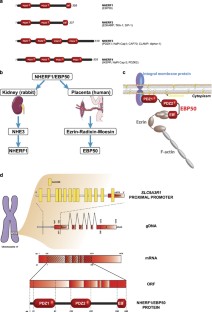
Scaffold proteins are involved not only signaling processes but also in the assembly-line processes and cell-cell communications. Through these regulations, scaffold protein can lead to dynamic signaling outputs. Scaffold proteins are signaling organizers which can modulate signaling specificity, integration, crosstalk, feedback, and multiplicity by acting as a physical platform to assemble signaling components. Scaffold proteins are known as an important controller in this process. This information is then processed by intracellular signaling networks to control various cellular outputs. Generally, cells can monitor environmental stimuli using sensors like receptors. Deeper understandings about the roles of scaffold proteins from this study will provide a higher opportunity to find therapeutic or engineering applications of scaffold proteins using their functional characteristics.Ĭells regulate and integrate various functional modules to monitor external and internal states, and to execute the appropriate physiological responses. In conclusion, we could predict larger volume of scaffold proteins and analyzed their functional characteristics. Furthermore, we checked that the disease association of scaffold proteins is higher than kinases. We also identified functional association between scaffold proteins and their recruited proteins. Through the function enrichment analysis of highly reliable scaffold proteins, we could confirm the significantly enriched functions that are related to scaffold protein binding. The precision, sensitivity and specificity of our testing was 80.3, 51.0, and 98.5 % respectively. We prepared 158 gold standard positive data and 844 gold standard negative data based on the functional information from Gene Ontology consortium. To assess the accuracy of our prediction, the gold standard positive and negative data sets were constructed. Finally, we could define 2716 highly reliable scaffold protein candidates and their characterized functional features. Resultsįrom a total of 10,419 basic scaffold protein candidates in protein interactomes, we classified them into three classes according to the structural evidences for scaffolding, such as domain architectures, domain interactions and protein complexes.

In this paper, we will suggest a systematic approach to predict massive scaffold proteins from interactomes and to characterize the roles of scaffold proteins comprehensively. However, there were limitations in finding diverse types of scaffold proteins because their criteria were restricted to the classical scaffold proteins. Despite being highlighted as the regulatory roles of dozens of scaffold proteins, there was only one known computational approach carried out so far to find scaffold proteins from interactomes. Identification of scaffold proteins and the study of their molecular mechanisms can open a new aspect of cellular systemic regulation and the results can be applied in the field of medicine and engineering.

Scaffold proteins are known for being crucial regulators of various cellular functions by assembling multiple proteins involved in signaling and metabolic pathways.


 0 kommentar(er)
0 kommentar(er)
